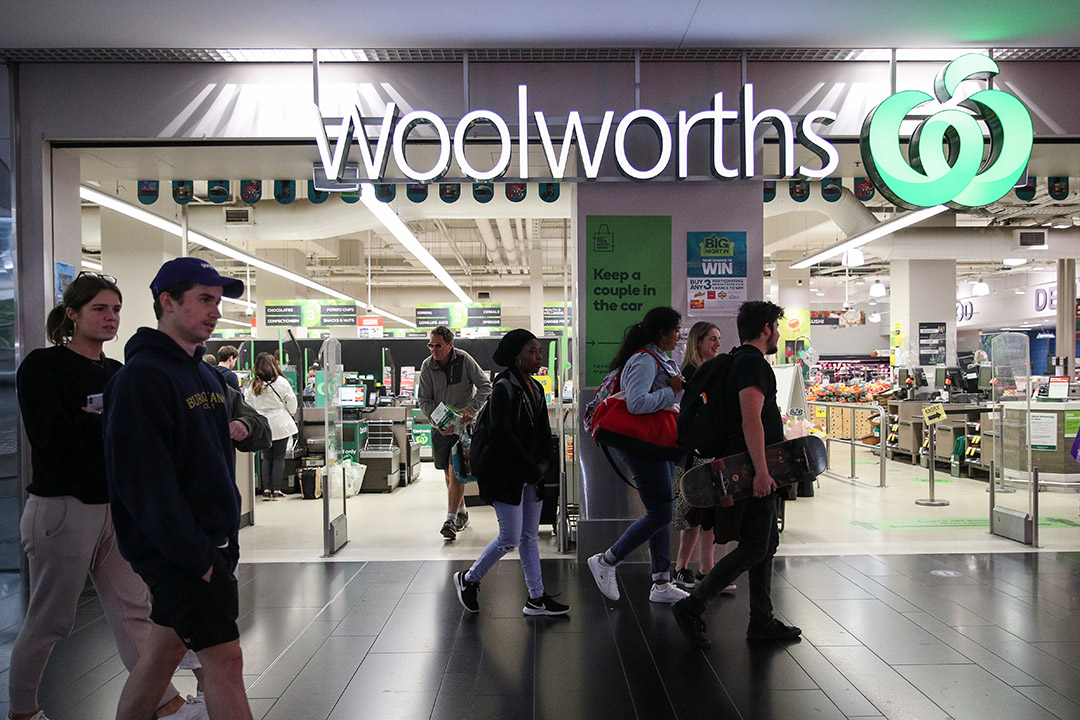

Supermarket giants Woolworths and Coles have been big winners from the Covid-19 pandemic. Yesterday, Woolworths reported comparable store sales growth in the all-important ‘Australian food’ category of 11.5% for the September quarter.
Competitive pressures have also eased. Earlier in the year, low-cost German operator Kaufland abandoned plans to launch a chain of supermarkets in Australia, and while Woolies and Coles still have to put up with Aldi and IGA, the “supermarket wars” are a thing of the past. Prices are starting to increase again, with Coles reporting inflation (excluding tobacco and fresh food) of 0.8% in the September quarter.
On the downside, they have incurred considerably higher costs to make shopping at their stores “Covid-19 safe”. But the pandemic has also meant a huge boom and acceleration in online ordering and delivery (which will ultimately be a big driver of profitability), and profits have risen. And the share market has rewarded both stocks, with Woollies up 6.6% and Coles by an impressive 20.6% in 2020.
So, what is next for the supermarket giants? And is it Woolies or Coles?
Looking ahead, sales growth will slow as Australians adjust to living in in a “Covid-normal” world. Comparable store sales growth for Coles in October slipped to 6.4%, whereas Woolworths says that it moderated over the month to “high single digit”. But some of the major trends from the pandemic, such as high levels of awareness of personal hygiene and increased levels of at-home activity and entertaining are likely to underpin increased consumption of goods from the supermarkets.
While costs will remain elevated in the short term, the supermarkets will benefit in the medium term from their investment in supply chain management and logistics, digitisation and utilising “big data” to drive sales through tailored offers and promotions. Internet sales will become a key driver of profit growth. With competitive pressures easing, it is hard to see the cosy duopoly coming under too much pressure and margins deteriorating.
Certainly, in an environment where the Reserve Bank says that “the Board is not expecting to increase the cash rate (from 0.10%) for at least three years”, Woolworths and Coles should remain popular with investors because of their defensive characteristics and secure dividend yields. So, it is Woolies or Coles?
Woolworths consistently beats Coles in sales, enjoys higher gross margins, has a lower cost of doing business and is a better retailer. For example, in the September quarter, it grew comparable store sales in Australian food by 11.5%. Coles on the other hand, enjoyed growth of 9.7%.
In liquor, with its Dan Murphys and BWS stores, Woolworths grew comparable store sales by 20.0%. Coles, which has Liquorland, First Choice, Liquor Market and Vintage Cellars in its stable, grew sales over the same period by 17.8%.
Woolworths also owns discount retailer BigW which has been a drain on earnings. It looks to have turned the corner with total sales surging by 20.4% and comparable store sales growing by 22.3%. There is also the hotels division, where sales were down by 33.2% due to the lockdown in Victoria and operating restrictions in other states, and the New Zealand supermarket business (which operates under the Countdown brand) and reported comparable store sales growth of 5.8%.
Coles “problem child” has been its convenience stores business (Coles Express), where sales were floundering due to a fall in fuel volumes. However, despite a decline in foot traffic, in store sales grew by 10.2% in the quarter.
The major brokers see almost the same upside for both stocks. According to FN Arena, the consensus target price for Woolworths is $42.17, 9.4% higher than yesterday’s closing price of $38.55. For Coles, the brokers’ target price is $19.64, 9.5% higher than its closing price of $17.93.
Woolworths trades at a premium to Coles, reflecting its stronger sales growth, operating margin and business franchise. According to FN Arena, Woolworths is trading at a multiple of 26.3 times forecast FY21 earnings and 24.6 times forecast FY22 earnings. Coles, according to the same brokers, is on a multiple of 23.4 times FY21 earnings and 22.3 times FY22 earnings.
However this premium of around 12% has narrowed in 2020 and is now at a level that makes Woolworths relatively attractive. Also, the demerger of the Endeavour Drinks Group, which includes the liquor and hotels businesses, will happen in 2021 and this could deliver a bonus for Woolworths shareholders.
For income players, Coles is forecast to pay a higher dividend of 3.4% (fully franked) compared to Woolworths 2.8% (fully franked). But with Woolworths continuing to win the sales wars, I am sticking with the number one player. Woolworths by a nose.